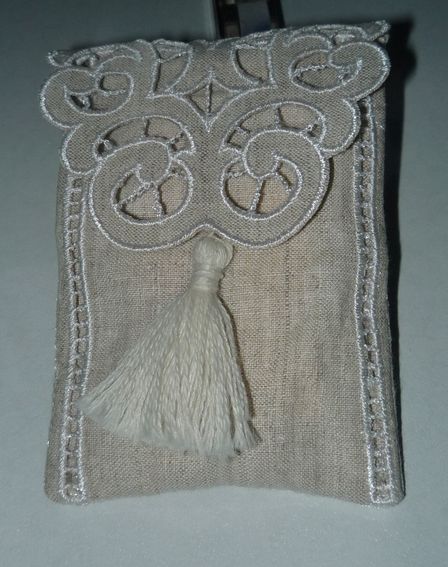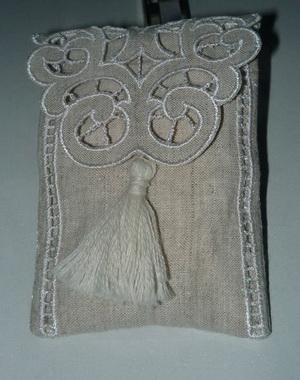Original text by Marina Belova
I'm writing this article following a request from Tatyana.
As I understand, there are at least 3 ways of creating cutwork on the embroidery machine:
- Manually cutting holes.
- Applying a special solution to the fabric that dissolves natural fibers.
- Using special tools, such as:
- A boring machine (it's only compatible with industrial embroidery machines, to the best of my knowledge). Read a short guide to boring here.
- Venere needles (these work on any embroidery machine).
Today I'll dwell on the first issue, i.e. cutting holes manually.

You can download a book by O.I. Furletova on the Web. It is called The Encyclopedia of machine embroidery, and it is dedicated to free-motion embroidery on an ordinary straight-stitching machine. Perhaps, it is the only book in Russian that reveals as least some secrets of machine embroidery. Why do I say that? Because machine embroidery, whether a free-motion one or created in the special embroidery software for automated embroidery machines, is based on the same principles. There are some dissimilarities, but the basic principles are the same.
According to this encyclopedia, cutwork embroidery is a type of openwork. And not only that, it's one of the easiest. Well, let's take the author's word for it. All the more so because, in my opinion, this encyclopedia most fully answers the question of how to create cutwork by manually cutting holes.
The embroidery process is simple. You can find tons of master-classes on the Web that describe in details what should be done and how, but I'll write about it anyway:
- Hoop the water-soluble film.
- Embroider all the stitches to which the fabric will be cut.
- Take the hoop off the machine and place it onto an even surface.
- Trim the extra fabric without touching the stabilizer, in order to make holes. Remove the thread ends that stick out.
- Insert the hoop back into the machine.
- Embroider the rest of the design.
- Wash the ready item.
There may be several stops during the embroidery in order to cut away pieces of fabric, depending on the design.
Digitizing for cutwork:
- First, you digitize the double running stitch outline with the stitch length no higher than 1.5–1.8 mm. The second running stitch outline should be placed near the first one and not on top of it.
- Then you lay a zigzag or a satin border to reinforce the edges of the holes, to prevent the fabric from unraveling. Density should be set at about 1.5 mm, 1–1.5 mm. You need to test and choose it in accordance with the type of fabric used, threads and so on.
- Then you digitize everything that'll be embroidered inside the holes – "bridges", nets, spiders, etc. For bridges you lay running stitches first (in several runs), which should be necessary linked with the already embroidered zigzag, to prevent fraying. Then this running stitch is covered with a zigzag or satins.
- The edge of the fabric in reinforced perimeter-wise with a finishing satin border. Some prefer a dense border, I'd rather have not too dense one.
Here, as in machine embroidery in general, you should test everything, and therefore, a digitizer chooses his/her own strategy of design creation.
For this reason, all of the settings listed above are just for starters.
I personally would advise planning the cutwork sequence so that there are as little trims as possible during the embroidery – the fewer they are, the cleaner the embroidery will look.
To me, cutwork and digitizing for it is somewhat similar to the reverse appliqué. But, instead of the fabric, you embroider the back side on a stabilizer that will be heated away or solved in water afterward.
I hope this information was in any way helpful.
Click here to see the master-class on how to create cutwork on your embroidery machine.
Edited by Irina



There are no reviews to display.